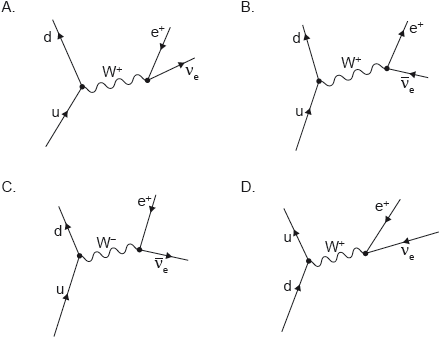| Date | May 2021 | Marks available | 1 | Reference code | 21M.2.HL.TZ1.7 |
| Level | Higher level | Paper | Paper 2 | Time zone | 1 |
| Command term | Identify | Question number | 7 | Adapted from | N/A |
Question
Radioactive uranium-238 produces a series of decays ending with a stable nuclide of lead. The nuclides in the series decay by either alpha (α) or beta-minus (β−) processes.
The graph shows the variation with the nucleon number A of the binding energy per nucleon.
Uranium-238 decays into a nuclide of thorium-234 (Th).
Write down the complete equation for this radioactive decay.
Thallium-206 decays into lead-206 .
Identify the quark changes for this decay.
The half-life of uranium-238 is about 4.5 × 109 years. The half-life of thallium-206 is about 4.2 minutes.
Compare and contrast the methods to measure these half-lives.
Outline why high temperatures are required for fusion to occur.
Outline, with reference to the graph, why energy is released both in fusion and in fission.
Uranium-235 is used as a nuclear fuel. The fission of uranium-235 can produce krypton-89 and barium-144.
Determine, in MeV and using the graph, the energy released by this fission.
Markscheme
✓
Allow He for alpha.
udd→uud
OR
down quark changes to up quark ✓
measure «radio»activity/«radioactive» decay/A for either
OR
take measurements with a Geiger counter. ✓
for Uranium measure number/N of radioactive atoms/OWTTE ✓
for Thalium measure «rate of» change in activity over time. ✓
correct connection for either Uranium or Thalium to determine half life ✓
links temperature to kinetic energy/speed of particles ✓
energy required to overcome «Coulomb» electrostatic repulsion ✓
«energy is released when» binding energy per nucleon increases
any use of (value from graph) x (number of nucleons) ✓
«235 × 7.6 – (89 × 8.6 + 144 × 8.2) =» 160 «MeV» ✓


